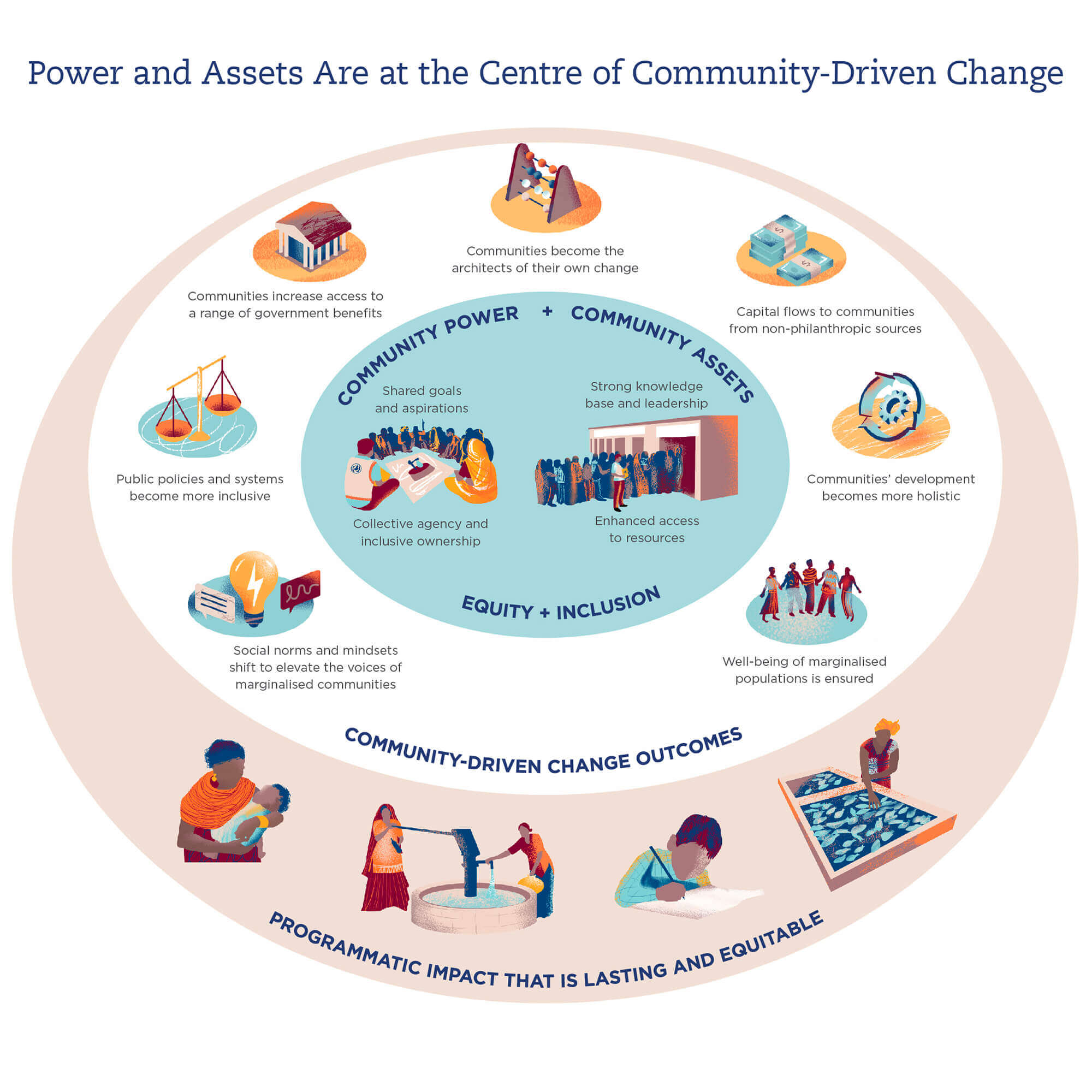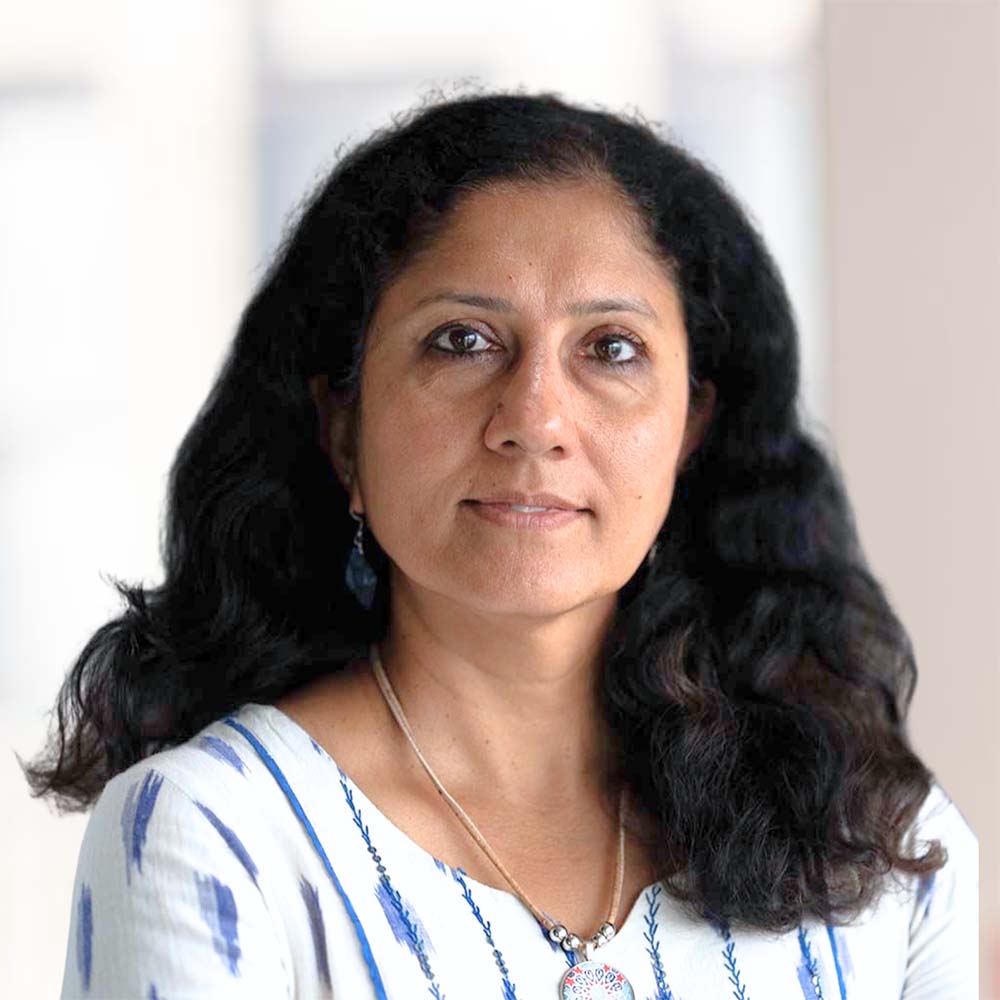Executive Summary
An early team member of BRAC, the groundbreaking development organisation founded in Bangladesh, observed “If you do not learn from the people, you are not a development worker at all.”1
An increasing number of organisations are now learning from the people. Community-driven change (CDC) is a way to hasten that learning, asking funders and nongovernmental organisations (NGOs) to rethink their relationships with communities. CDC elevates the local knowledge and lived experiences already in communities, granting them the power to make decisions about their futures. It’s a process whereby communities actively participate in, lead, and own the identification, design, and execution of solutions for the challenges they face. Fundamental to the process is to ensure community self-determination takes root, and historically marginalised populations take part, so that social change is lasting and equitable.
The CDC approach has built momentum over recent years as a growing number of funders and implementing organisations (NGOs and community-based organisations) champion its potential for communities to architect and lead their own change. Bridgespan has contributed to this movement with reports that seek to inspire funders and implementing organisations to adopt the CDC approach to development.2
Building on that work, in 2023, we joined with eight anchor partners to embark on a multi-year initiative, with the goal to fill gaps in knowledge and catalyse more CDC globally. Our primary objectives for this report were to gather evidence of CDC’s impact, identify factors that enable CDC to take hold, and suggest guidance for funders and implementing organisations eager to get started or get more deeply involved in CDC. This report spotlights emerging evidence of CDC’s potential, drawing on multiple examples in addition to survey data from some 800 households with first-hand experience of CDC initiatives in India, Kenya, and South Africa.
One key insight: the CDC process builds individual and collective power and assets – power in forms such as agency, shared vision, and inclusive leadership, and assets such as knowledge, skills, and financial resources. Power and assets lay the groundwork for lasting and equitable change. In case after case, we found that when a CDC approach was implemented, programmes saw a significant impact across issues areas, and communities built power and assets that helped them sustain those impacts and build on them, even after implementing organisations stepped into other roles.
We also found that CDC is a powerful way to work towards inclusive decision-making and equitable impact within communities. For example, the percentage of community members we surveyed who felt that development activities focused on historically marginalised individuals rose from 72 percent to 92 percent after an implementing organisation began to work with them using CDC approaches.
We found compelling evidence of these changes in a set of CDC outcomes achieved by communities in Africa and India. In over 60 interviews, a review of roughly 100 CDC organisations, and site visits to nine of them, we observed communities:
- Becoming architects of their own change
- Obtaining resources from non-philanthropic sources
- Accessing a broader range of government benefits
- Taking a holistic approach to addressing varied community needs
- Shifting social norms and mindsets to elevate the voices of marginalised populations
- Creating inclusive public systems and policies
- Ensuring the wellbeing of historically marginalised populations

The examples we cite describe compelling evidence of how CDC has made progress on outcomes across different sectors and themes, such as gender, livelihoods, climate, education, health, and water, sanitation, and hygiene (WASH). Communities collectively determined priorities and set their own development agenda through CDC approaches that built their power and assets. That led to measurable improvements in clean water, sanitation, better schools, and health clinics, amongst other programmes. In many cases, we found such programmatic impacts to be both lasting and equitable. Those whom we surveyed found CDC initiatives to be beneficial. Sixty-six percent said that their power to influence community decisions has increased since the implementing organisation began working in their community.
However, some communities may be more ready for CDC than others. During focus-group discussions, NGO leaders cautioned that CDC needs at least four “enabling conditions” in place before it can establish a strong foothold: a community-wide sense of security that comes from access to basic needs; strong social cohesion; community platforms, such as self-help groups and village development committees, that elevate all community voices; and a supportive ecosystem of funders, NGOs, markets, and government to back community-driven initiatives.
For many funders, the pressing question isn’t whether to pursue CDC, but how to proceed. Three suggestions emerged from our research:
- Prioritise the CDC process of building power and assets
- Cultivate existing CDC organisations and identify new ones
- Adopt measurement and evaluation practices that account for CDC
Some of the CDC outcomes we identified give funders and implementing organisations a starting point to assess whether community power and assets are being strengthened and are laying the groundwork for enduring and equitable change. Alongside quantitative evaluation, measurement should include qualitative assessments that look for changes in such things as self-confidence, leadership skills, sustainability, and equity.
In the next phase of our CDC initiative, we plan to dig more deeply into when and how to get started, and in particular, into measurement and evaluation. Our goal is to inspire more funders to invest in developing community power and assets that lead to self-determination. It’s an investment that shows promise of returning durable, equitable results – for communities to build better lives for themselves.







